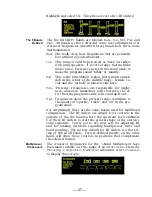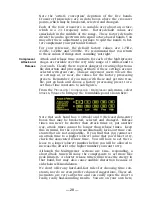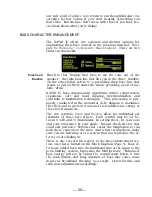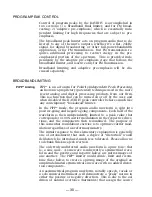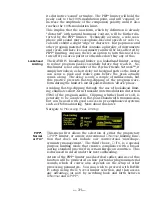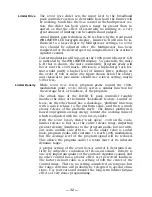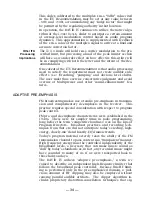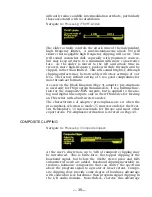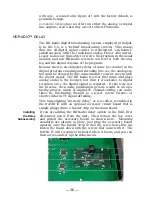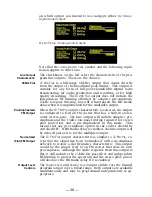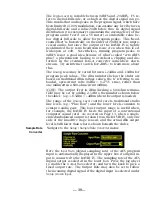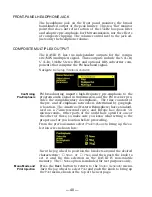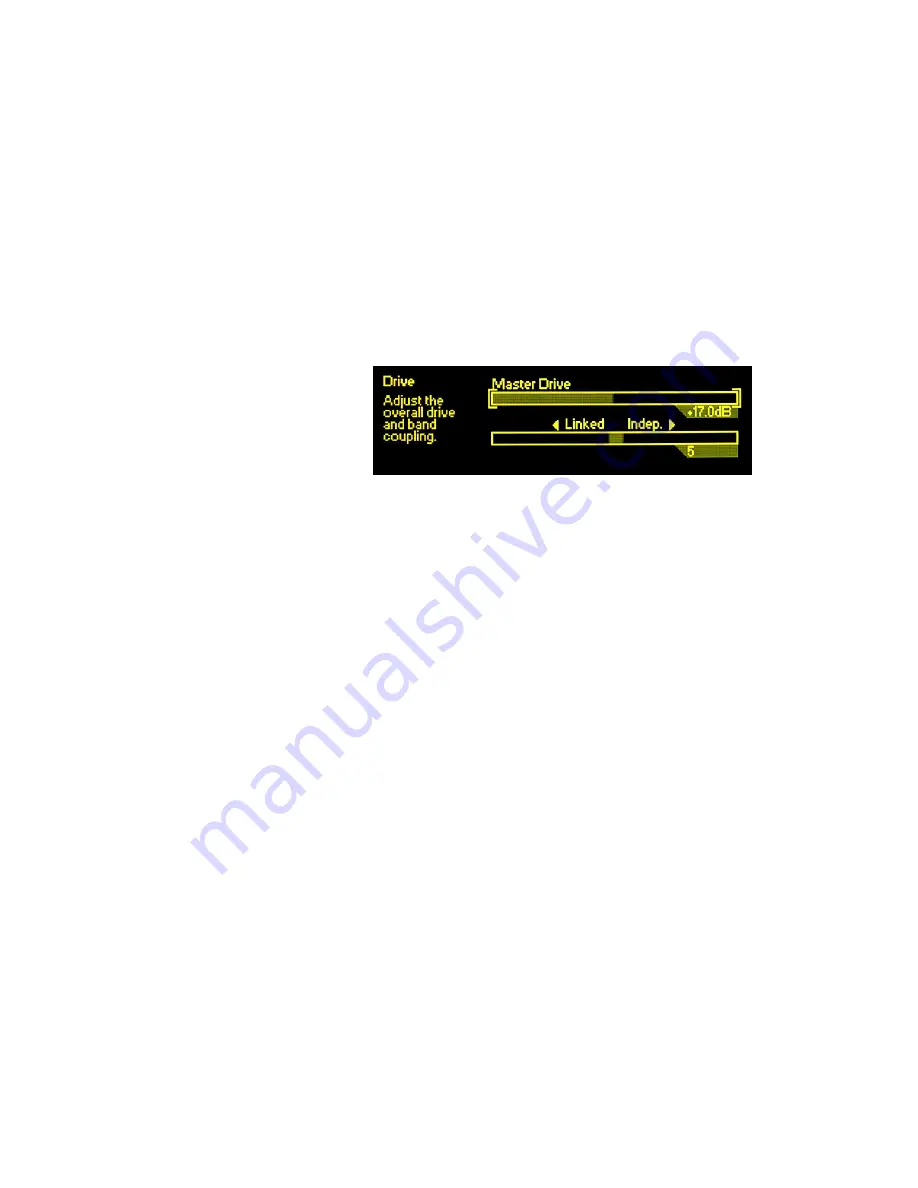
— 25 —
compression, with the threshold, waveform response and trans-
fer function engineered for the most effective action within
each band.
Optimum Multipressor parameter settings were derived from
exhaustive tests by a core of listeners comprising both tech-
nical and non-technical types, including those with extensive
musical training. Many of these parameters are fixed, as
providing user control over the thousands of parameter permu-
tations would make setup a veritable nightmare… not the ob-
jective of this product. Some parameters, those that most read-
ily define ‘sonic signature,’ have been made available for user
adjustment over a reasonable range.
Compressor
Drive
Navigate to:
Processing / Compression /
Drive
:
There are two adjustments in this menu.
Master Drive
varies the
total signal level going into the DAVID IV compression section.
The setting of this control determines how hard the compres-
sor will work, overall, and to a large extent how ‘busy’ or dense
the program will sound.
Master Drive
has been given a very wide range. At the minimum
setting of
0.0dB
, even program material with very wide dynam-
ics will not even ‘tickle’ the compressors, with no indication of
gain reduction, or G/R, in any band as shown on the
LEVELING
/
COMP
bargraph readouts. Advanced all the way to
30.0dB
, all
five bands will probably be dancing down close to the bottom
of the bargraph displays.
A proper setting for this control will probably be somewhere
close to the center of this control range. The factory
default
is
+17.0dB
, although individual factory
presets
will have varying
values for specific formats. Generally, a lower setting is called
for with classical, jazz and ‘easy-listening’ formats, and a more
aggressive setting for pop, rock and heavy-metal.
Spectral
Loading
The greatest audible effect of multiband processing is realized
when each band operates independently of the others. Of
course there is some duplicity at the band crossover frequen-
cies, but fully independent operation of each band will increase
‘spectral density.’ This means that it will tend to maximize the
energy at all frequencies, even if the incoming program materi-
al has a ‘peaky’ (varied) spectral profile. We have named this
effect
Spectral Loading
.
A good way to picture this is to imagine the input program pro-
file as seen on a real-time audio analyzer, or RTA, which shows
the audio energy at specific frequency intervals across the au-
Summary of Contents for 719
Page 1: ...DAVID IV FM Audio Broadcast Processor Installation User Guide www inovonicsbroadcast com ...
Page 2: ......
Page 4: ......
Page 70: ... 66 NOTES AND DOODLES ...

















